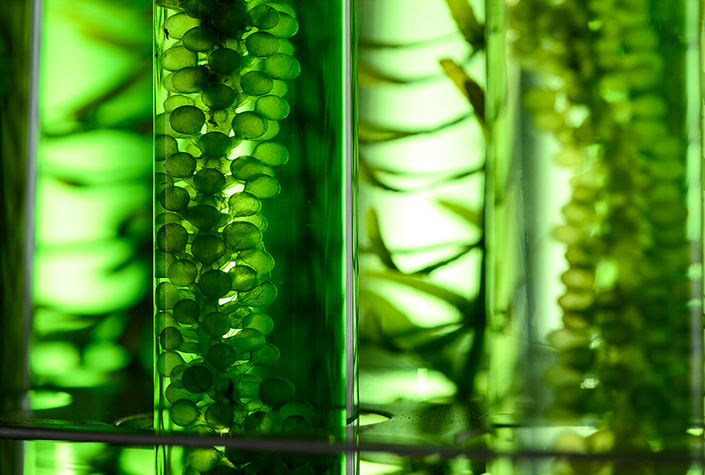Think green: Artificial intelligence evaluates algae as energy source

Texas A&M AgriLife Research scientists are using artificial intelligence to set a new world record for producing algae as a reliable, economic source for biofuel that can be used as an alternative fuel source for jet aircraft and other transportation needs.
Joshua Yuan, AgriLife Research scientist, professor and chair of Synthetic Biology and Renewable Products in the Texas A&M College of Agriculture and Life Sciences Department of Plant Pathology and Microbiology, is leading the research project.
The team’s findings were published in January in Nature Communications. Ongoing research is funded by the U.S. Department of Energy Fossil Energy Office. The work is also being funded by a gift from former students John and Sally Hood, who recently met with Yuan to discuss his biofuels research program. The gift is managed by the Texas A&M Foundation.
The project team includes Bin Long, a graduate student from the Department of Plant Pathology and Microbiology; Bart Fischer, co-director of the Texas A&M Agricultural and Food Policy Center and Texas A&M Department of Agricultural Economics; Henry Bryant, Department of Agricultural Economics; and Yining Zeng, staff scientist with the U.S. Department of Energy National Renewable Energy Laboratory.
“The commercialization of algal biofuel has been hindered by the relatively low yield and high harvesting cost,” Yuan said. “The limited light penetration and poor cultivation dynamics both contributed to the low yield.”
Overcoming these challenges could enable viable algal biofuels to reduce carbon emissions, mitigate climate change, alleviate petroleum dependency and transform the bioeconomy, Yuan said.
Yuan has previously been successful at finding methods to convert corn stubble, grasses and mesquite into biodegradable, lightweight materials and bioplastics. His latest project utilizes a patented artificial intelligence advanced learning model to predict algae light penetration, growth and optimal density. The prediction model allows for continual harvest of synthetic algae using hydroponics to maintain the rapid growth at the optimal density to allow best light availability.
The method Yuan and team have successfully achieved in an outdoor experiment is 43.3 grams per square meter per day of biomass productivity, which would be a world record. The latest DOE target range is 25 grams per square meter per day.
“Algae can be used as an alternative energy source for many industries, including biofuel and as jet fuel,” Yuan said. “Algae is a good alternative fuel source for this industry. It’s an alternate feedstock for bioethanol refinery without the need for pretreatment. It’s lower cost than coal or natural gas. It also provides for a more efficient way of carbon capture and utilization.”
Yuan said algae can also be used as a source for animal feed. AgriLife Research has previously investigated algae as a source of livestock protein.

